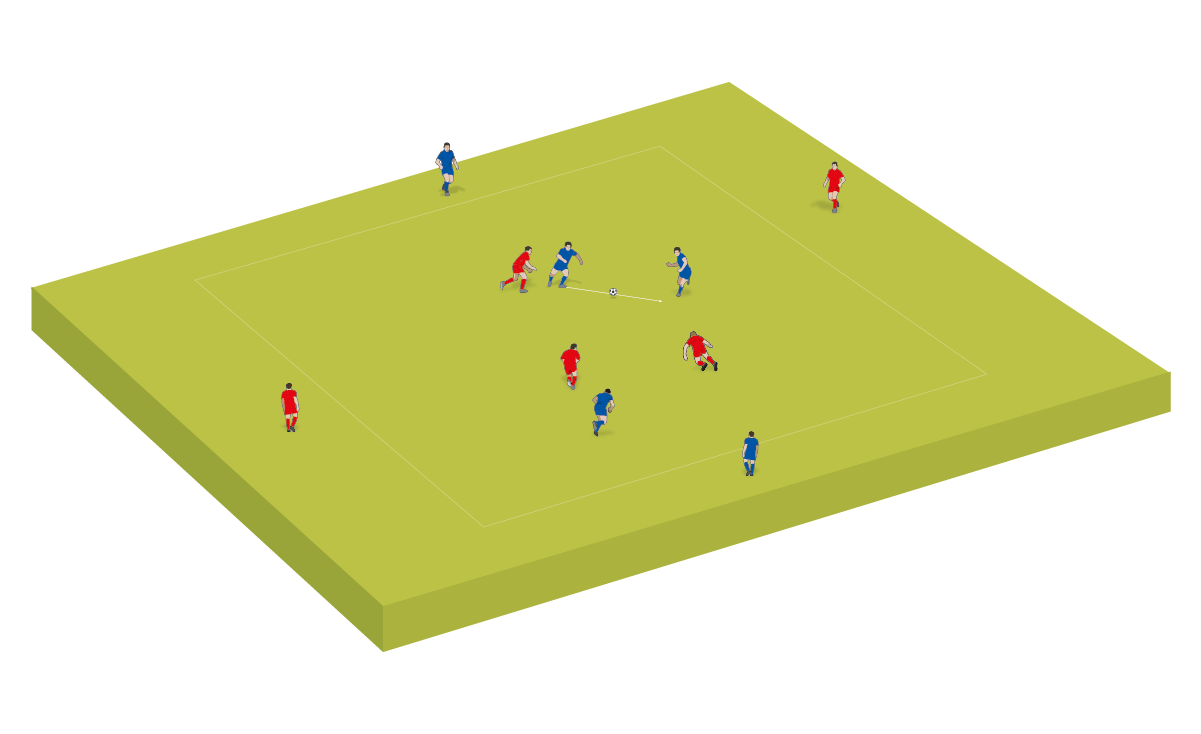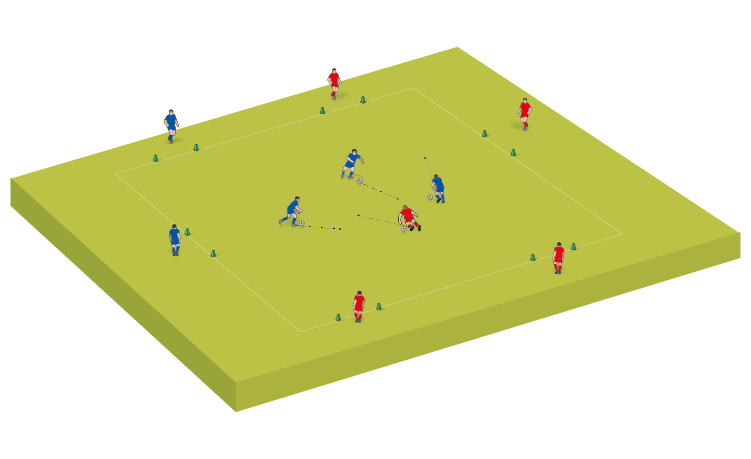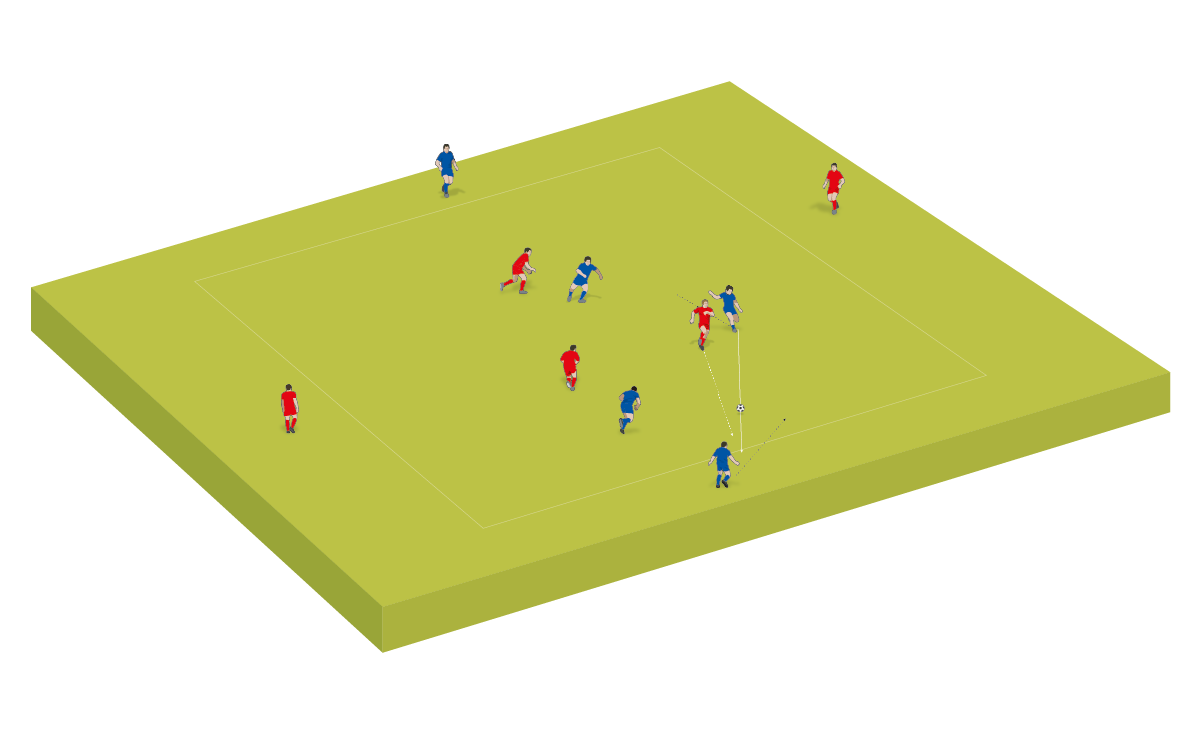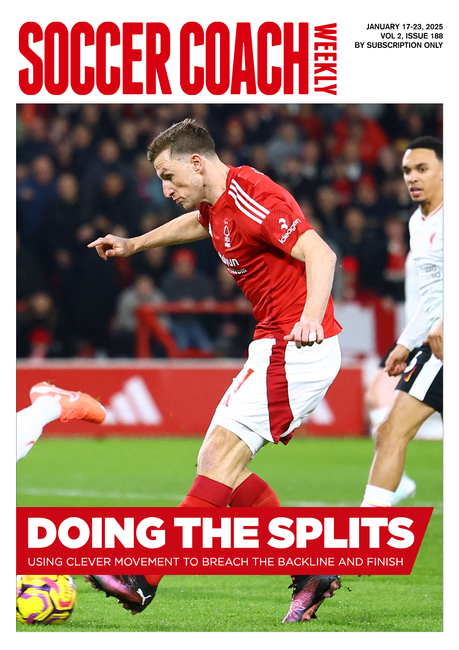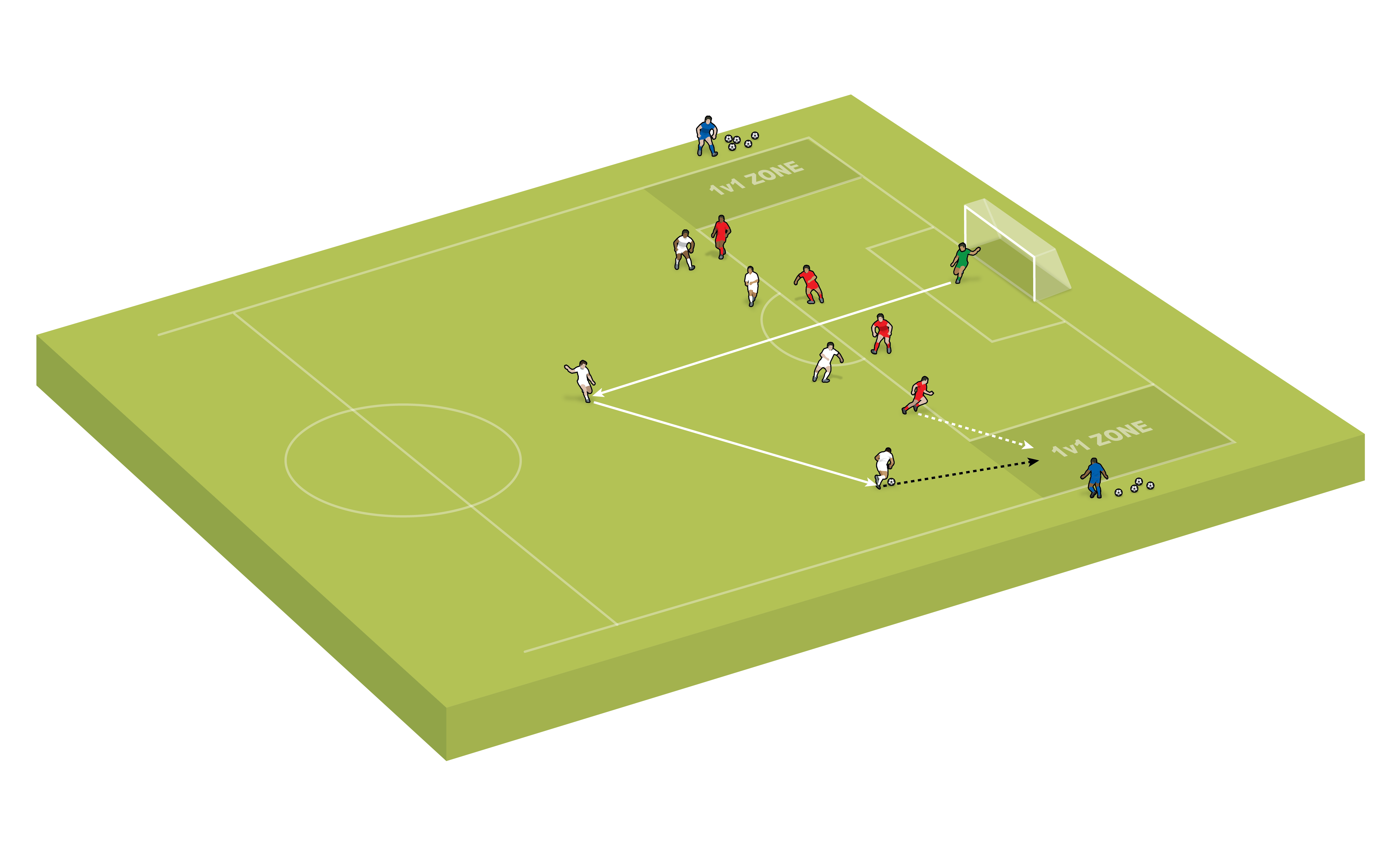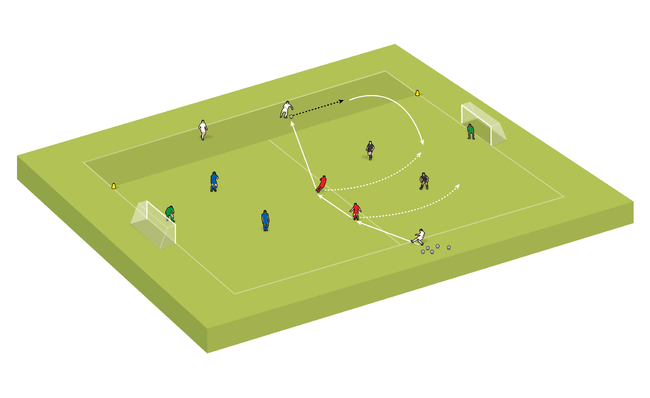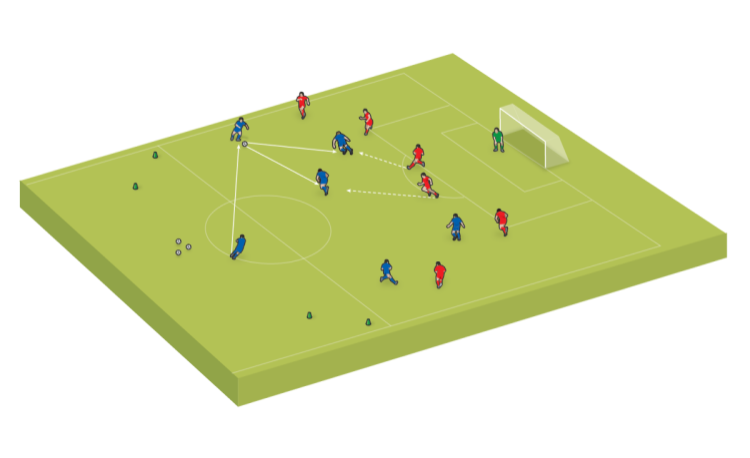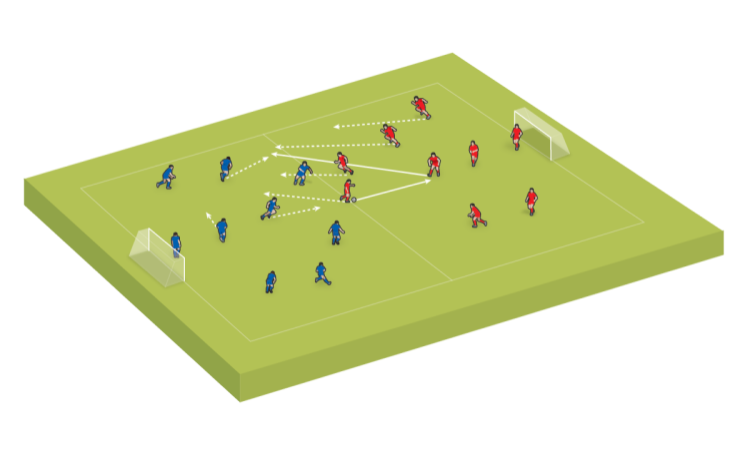Practice 3: The common touch
A good first touch is important for control of the ball - this session will help your players improve theirs. Use this session as a standalone activity, or combine it with two progressions to create a full session
WHY USE IT
The practice is opposed, which helps to create a random environment. The players will need to decide what they want to do with the ball before they receive it, so that their first touch allows them to do it.
SET UP
Use a square area relevant in size for the number of players, their age and ability. Split players into two teams - each team has two players outside the area, with the remaining players inside. Those on the outside stand on one side of the area, opposite to their partner.
how to play
Players within the area look to complete a set number of passes (say, three or four) before passing it to a team-mate on the outside. On receiving, the player on the outside must enter the area and pass the ball to a team-mate. They must also be replaced on the outside. If a team achieves this, they win a point and the practice continues.
coaching points
Players need to decide what they want to do before they receive the ball, so they can have a first touch that allows them to carry out their next action effectively. When entering the area, the player needs to identify where exactly they should enter and their first touch should then allow them to do this.
Related Files
Coaches Testimonials

Gerald Kearney, Downtown Las Vegas Soccer Club

Paul Butler, Florida, USA

Rick Shields, Springboro, USA

Tony Green, Pierrefonds Titans, Quebec, Canada
Soccer Drills
Discover the simple way to become a more effective, more successful soccer coach
In a recent survey 89% of subscribers said Soccer Coach Weekly makes them more confident, 91% said Soccer Coach Weekly makes them a more effective coach and 93% said Soccer Coach Weekly makes them more inspired.
*includes 3 coaching manuals
Get Weekly Inspiration
All the latest techniques and approaches
Soccer Coach Weekly offers proven and easy to use soccer drills, coaching sessions, practice plans, small-sided games, warm-ups, training tips and advice.
We've been at the cutting edge of soccer coaching since we launched in 2007, creating resources for the grassroots youth coach, following best practice from around the world and insights from the professional game.
